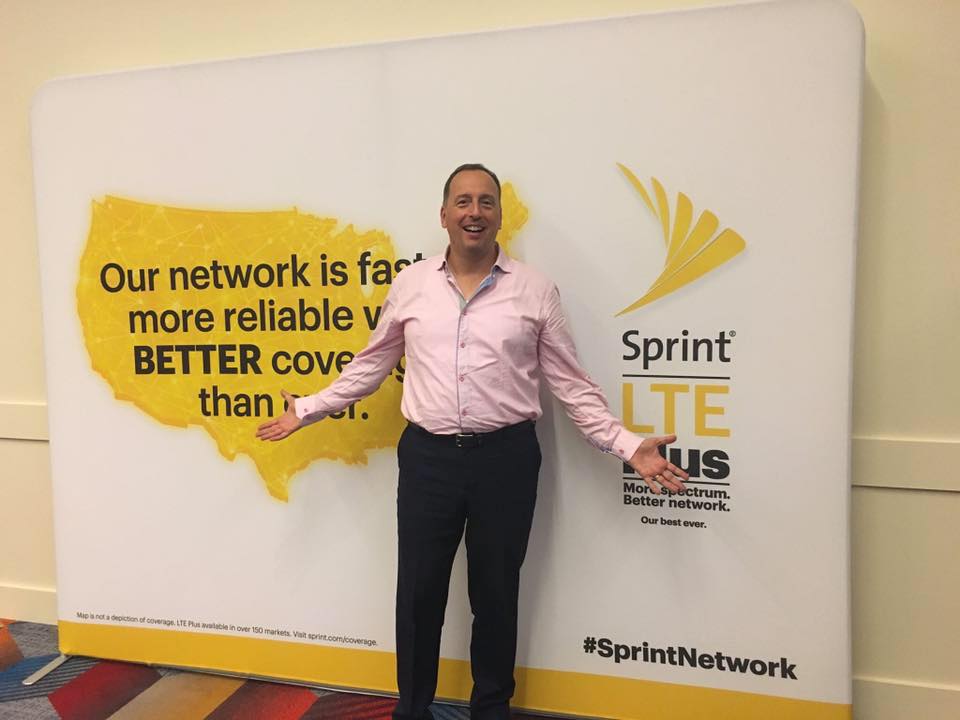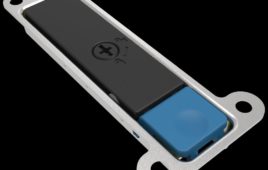
Sprint COO Gunther Ottendorfer stands in front of Sprint signage at CTIA 2016. Credit: Sprint COO via Facebook
Three-channel carrier aggregation is all the rage these days.
Over the past month, Verizon announced its launch of nationwide LTE Advanced with two- and three-channel carrier aggregation; Sprint began deployments of the 3CA technology in Chicago and Kansas City; T-Mobile said it’s already deployed the technology; and AT&T confirmed to Wireless Week a report that it’s also in the process of deploying 3CA technology.
But according to Sprint, which has been publicly testing three-carrier aggregation since March, not all versions of the technology are created equal.
At CTIA’s 2016 Super Mobility show last week, Sprint COO Gunther Ottendorfer explained there are two different types of carrier aggregation: intra-band, which uses chunks of spectrum in the same band, and inter-band, which cobbles together chunks of spectrum from different frequencies.
In its iteration of three-carrier aggregation, Ottendorfer said Sprint uses an intra-band approach on its 2.5 GHz spectrum to pull together three 20 MHz chunks.
“Not all carrier aggregation is equal,” Ottendorfer said. “The other carriers don’t have, I think, 60 MHz in one spectrum that they can use for that, so they need to scrape the barrel and get some megahertz there and some there and then they put it together. And that is not the same thing.”
Sprint Vice President of Technology Innovation and Architecture Ron Marquardt, who also sat in on the interview, said the different bands involved in inter-band carrier aggregation also offer different levels of coverage. So where Sprint’s carrier aggregation can offer a consistent customer experience, the same technology from other carriers with assorted spectrum might offer varied quality.
“Part of the complexity from a customer’s perspective is you may be CA-ing two or three channels together but if they have different coverages as you’re moving through the urban area you’re going to get very different experiences,” Marquardt said.
While the difference between inter- and intra-band carrier aggregation may not be immediately clear in the early roll out stages, Ottendorfer said Sprint’s advantage with spectrum and consistency will soon become more apparent.
“That will show over time,” Ottendorfer said. “It will show that we have that possibility to combine maximum-sized blocks, while the other use whatever they have.”
Filed Under: Telecommunications (spectrums)




